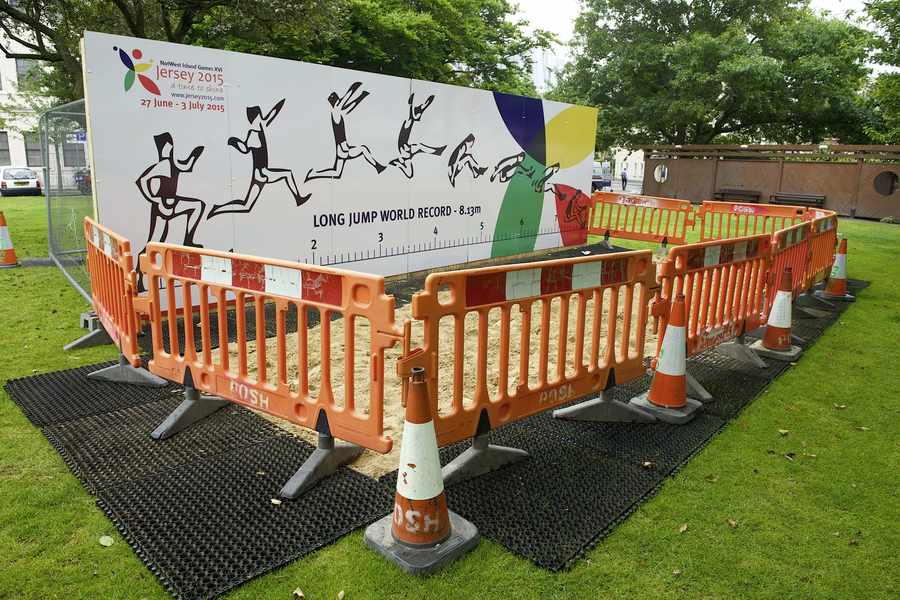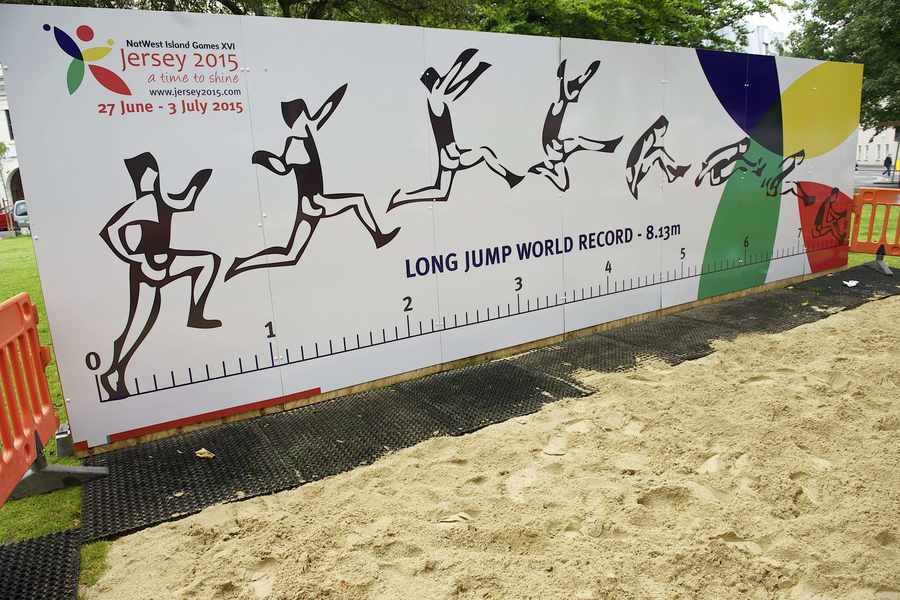And it appears that those who are setting up a series of interactive structures around St Helier to build up excitement around the sporting event have mistakenly used an out-of-date world record.
A long-jump course set up on the Parade – which people are being encouraged to use – has listed a jump of 8m 13 cm by Jesse Owens in 1936 as the current world record.

However, this record was smashed by Ralph Boston in 1960 and has been beaten several times since. The current record – which was set by Mike Powell in 1991 – is 8m 95 cm.
Daphne East, town centre manager and one of those who have organised the interactive structures which are expected to be officially unveiled tomorrow, says the mistake will be corrected as soon as possible.
She said: ‘We’ve co-ordinated with Economic Development, the Island Games organisers and Sports and Culture to try and make St Helier look Island Games ready.
‘Five minutes after the structure was put up we realised it was wrong. The designers are changing it and, depending on the weather, it will be ready by Wednesday.’

How it works
Competitors sprint along a runway and jump as far as possible into a sandpit from a wooden take-off board. The distance travelled, from the edge of the board to the closest indentation in the sand to it, is then measured.
A foul is committed – and the jump is not measured – if an athlete steps beyond the board.
Most championship competitions involve six jumps per competitor, although usually a number of them, those with the shorter marks, are often eliminated after three jumps. If competitors are tied, the athlete with the next best distance is declared the winner.
History
The origins of the Long Jump can be traced to the Olympics in Ancient Greece, when athletes carried weights in each hand. These were swung forward on take-off and released in the middle of the jump in a bid to increase momentum.
The Long Jump, as we know it today, has been part of the Olympics since the first Games in 1896. The men’s event has seen some long-standing World records by American jumpers. Jesse Owens jumped 8.13m in 1935, a distance that was not exceeded until 1960, and Bob Beamon flew out to 8.90m in the rarefied air of Mexico City at the 1968 Olympic Games. The latter mark stood until Mike Powell beat it with a leap of 8.95m at the 1991 World Championships.
Did you know?
The standing long jump was also on the Olympic programme from 1900 to 1912 and the American jumper Raymond Ewry won four times, from 1900 to 1908, including at the 1906 Intercalated Games.
Gold standard
USA has dominated the men’s event at the Olympic Games, with all but six winners since 1896. US long jumper Dwight Phillips, the 2004 Olympic champion, has won at four of the last five IAAF World Championships.
On the women’s side, another American, Brittney Reese has been the top athlete in the event in recent years, winning at the last two IAAF World Championships and World Indoor Championships as well as at the 2012 Olympic Games.
Source: iaaf.org






